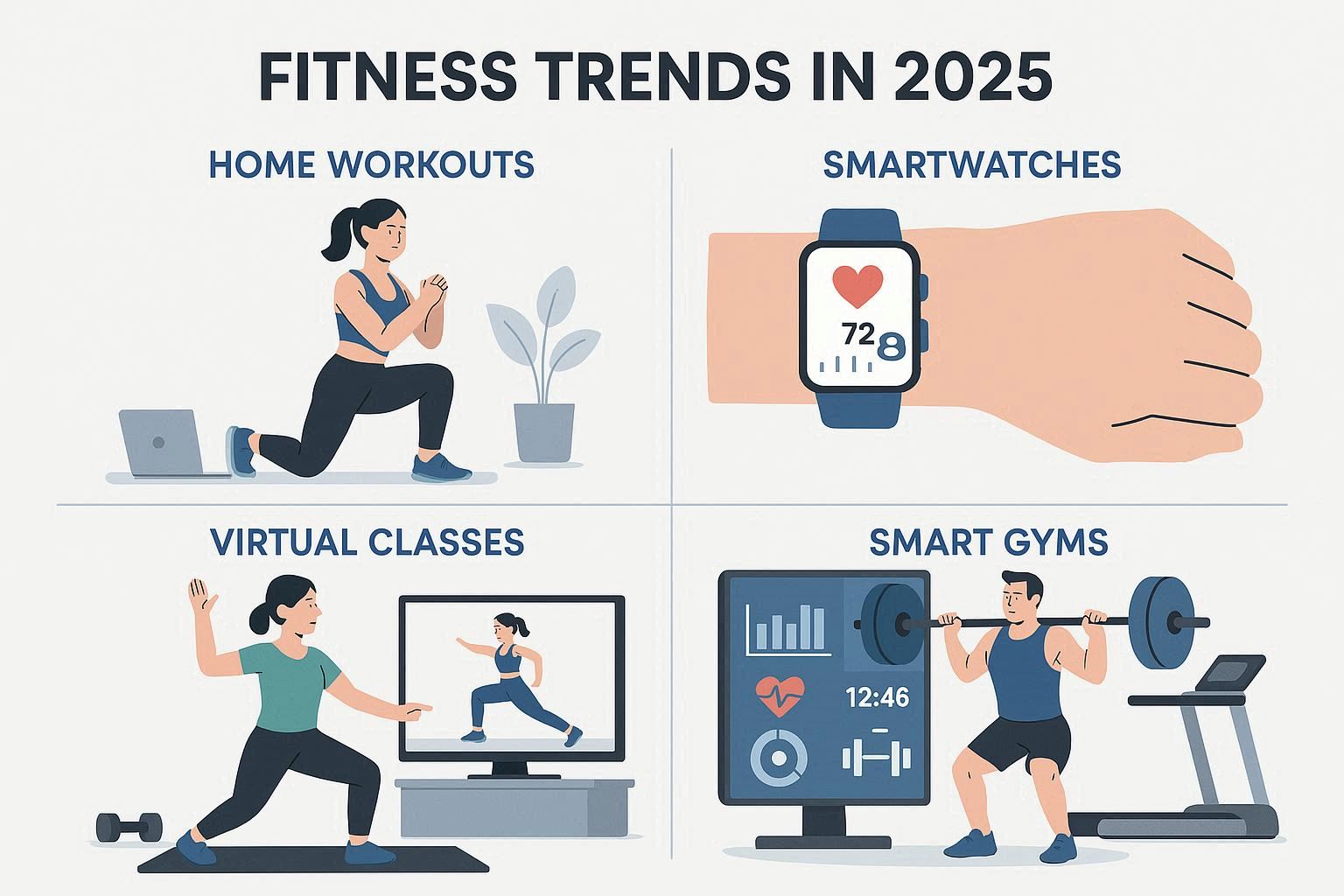Fitness has always been a central part of a healthy lifestyle, but in 2025 it looks very different compared to just a decade ago. Advances in technology, changing lifestyles, and the rise of health awareness have transformed the way people approach exercise. Whether through home-based workouts, virtual reality fitness, or high-tech gyms, staying active is now more flexible and personalized than ever before.
This article explores the biggest fitness trends in 2025, their benefits, and how they are shaping the future of health and wellness.
1. The Shift Toward Home Workouts
The popularity of home workouts began during global lockdowns in the early 2020s and has continued to grow. Today, millions of people rely on apps, online classes, and minimal equipment to exercise from home. Advantages of home workouts include:
- Flexibility to train anytime without commuting to a gym.
- Access to a variety of online programs and trainers.
- Lower costs compared to traditional gym memberships.
- Privacy and comfort in one’s own space.
Platforms offering guided classes, live streams, and AI-powered fitness coaching have made home workouts an effective option for beginners and advanced athletes alike.
2. Smart Gyms and Connected Equipment
For those who prefer the gym environment, smart gyms are revolutionizing the experience. Modern gyms now feature connected machines that track performance, offer personalized training, and sync with mobile apps. Features include:
- AI-Powered Equipment – Machines adjust resistance automatically based on user strength.
- Digital Progress Tracking – Performance data is stored and analyzed for better results.
- Interactive Displays – Screens provide real-time coaching and feedback during workouts.
These innovations make gyms more engaging and effective, ensuring that people train smarter, not harder.
3. Virtual Reality (VR) and Augmented Reality (AR) Fitness
One of the most exciting trends is the integration of VR and AR into fitness. With VR headsets, users can participate in immersive workouts such as cycling through virtual landscapes, boxing against digital opponents, or practicing yoga on a tropical beach. Benefits of VR and AR fitness include:
- Making workouts fun and engaging.
- Reducing boredom and increasing motivation.
- Allowing people to train in different environments without leaving home.
This trend is especially popular among younger generations and tech enthusiasts.
4. The Rise of Hybrid Fitness Models
In 2025, fitness is no longer limited to either home or gym—it’s both. Hybrid fitness models combine in-person and online training, giving users the flexibility to choose based on their schedule. For example, someone may attend a gym class twice a week and then follow online sessions at home for the rest of the week. This combination provides variety and keeps workouts interesting.
5. Group Workouts and Community Motivation
Despite the rise of digital solutions, group workouts remain popular for the motivation and accountability they provide. Whether in-person boot camps, online group classes, or fitness challenges, the sense of community keeps people consistent. Social features in apps, such as leaderboards and shared goals, make exercising more interactive and rewarding.
6. Personalized Training Through AI
Artificial intelligence is playing a bigger role in fitness. Apps and wearables now analyze performance, sleep, and nutrition to deliver customized training plans. AI coaches adjust workouts in real time, suggesting recovery days, new exercises, or intensity changes based on data. This personalization ensures that fitness routines are safe, effective, and tailored to individual needs.
7. Focus on Recovery and Holistic Wellness
Fitness in 2025 is not just about intense workouts—it’s about balance. Recovery, flexibility, and mental well-being are now considered as important as strength and endurance. Popular recovery trends include:
- Stretching and mobility routines to prevent injuries.
- Foam rolling and massage devices for muscle recovery.
- Breathing exercises and meditation for mental relaxation.
This holistic approach highlights that true fitness is a combination of body, mind, and lifestyle.
8. Sustainable Fitness Practices
Environmental awareness has also influenced the fitness industry. Many gyms now use eco-friendly equipment, renewable energy, and sustainable materials. Outdoor group workouts and nature-based activities like hiking and cycling promote both fitness and a connection to the environment. Sustainability is becoming a key factor for health-conscious consumers.
9. Wearables and Data-Driven Training
Wearables remain central to fitness trends in 2025. Smartwatches and fitness trackers collect data on heart rate, calories burned, oxygen levels, and sleep patterns. This information helps users set realistic goals and track progress. Integration with apps also enables data sharing with trainers, creating a more comprehensive health and fitness strategy.
10. Future Outlook: Where Fitness Is Heading
The future of fitness points to even greater integration of technology, personalization, and holistic health. Some trends to expect include:
- More advanced VR and AR fitness experiences.
- Expansion of AI-driven health and fitness coaching.
- Wider adoption of sustainable fitness facilities.
- Greater focus on mental health integration in training programs.
The fitness industry will continue to evolve with the goal of making exercise more enjoyable, accessible, and impactful for people of all ages.
Conclusion
In 2025, fitness is about more than just building muscle or losing weight—it’s about creating sustainable, enjoyable routines that support overall health. With the rise of home workouts, smart gyms, VR training, and AI-powered personalization, people have more tools than ever to stay active. By embracing these trends and focusing on balance, anyone can build a fitness routine that fits their lifestyle and keeps them motivated for years to come.

